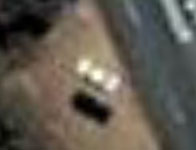MagicSHELF Update —
So I've been in contact with Uncle Url of Linky Dinky, and as a consequence I've become a firm believer in the brilliance and ingenuity of the
magicSHELF. Everyone needs to have one of these! Well, that may be, but the behind-the-scenes story is that Uncle Url and I have worked out a deal. He's sending me a magicSHELF (and an extra one which I can give away as a prize). I'm going to test it out and verify that it does indeed work as advertised. Then he'll be able to use me as an objective, third-party endorsement. In return, when he mentions my endorsement in his newsletter, he might also mention that I have a book coming out. So it's like a cross-promotional deal. The catch is that I can't actually spill the beans on how the magicSHELF works, in order to maintain the air of mystery about it. [It is a magic trick, after all, and it's not good form to reveal magic tricks.] So I can say that it works, but not how... though it's really not too hard to guess how it works, so I don't think I'm keeping a big secret. However, by mistake, I already spilled the beans. So I now have to "reclassify" that information. Everyone please forget what I posted
two days ago. (Oh, and expect to see me soon on one of those late-night infomercials:
It slices! It dices! It's the incredible magicSHELF!")
Update: Uh, yeah. Before anyone else accuses me of being "Bought for 4 pieces of aluminum" (ouch, that hurt), let me point out that this is a magicSHELF we're talking about. I really do think it's a fun, cute, novelty item. (I've always been a sucker for stuff like this. As a kid I was a huge fan of the clapper and chia pets.) It's not like I'm lending my name to promote
Lifewave Energy Patches. The magicSHELF is real and really does work, despite being of mysterious workings. And sometimes it's better to let certain things (Santa Claus, jackalopes, magicshelves) maintain a bit of mystery, rather than ruthlessly exposing their inner workings. Plus, having linkydinky mention my book in their newsletter is an incredible opportunity to get the word out about it (I worked pretty hard on it, so I'd like to give it every chance to do well), and refusing this opportunity in order to uphold the principle that the secret of the magicshelf MUST BE EXPOSED just seems kind of idiotic to me.

 Paul Farrington emailed me with a question about the HOTLIX Insect Candy Company: "The site looks real, the products look real, there are no obvious giveaways except the sheer unbelievable grotesqueness of the very concept! What’s your take?" Well, my take is that the insect candy is definitely real, though I've never ordered any of it and submitted it to an entomologist for confirmation. (Nor do I plan to.) But there's no reason to believe the candy wouldn't be real. After all, insects are eaten in many cultures. It's only Westerners who are squeamish about eating them. A recent article in the Smithsonian's Zoogoer magazine discusses insects as food, pointing out that honey is nothing more than "bee vomit," and even notes the existence of the HOTLIX Insect Candy Company:
Paul Farrington emailed me with a question about the HOTLIX Insect Candy Company: "The site looks real, the products look real, there are no obvious giveaways except the sheer unbelievable grotesqueness of the very concept! What’s your take?" Well, my take is that the insect candy is definitely real, though I've never ordered any of it and submitted it to an entomologist for confirmation. (Nor do I plan to.) But there's no reason to believe the candy wouldn't be real. After all, insects are eaten in many cultures. It's only Westerners who are squeamish about eating them. A recent article in the Smithsonian's Zoogoer magazine discusses insects as food, pointing out that honey is nothing more than "bee vomit," and even notes the existence of the HOTLIX Insect Candy Company: The first review of Hippo Eats Dwarf is in. Actually, it's not so much a full review as a descriptive blurb, but it's what the reviewer from Booklist wrote. (Booklist, from what I understand, is read mostly by librarians and bookstore owners.)
The first review of Hippo Eats Dwarf is in. Actually, it's not so much a full review as a descriptive blurb, but it's what the reviewer from Booklist wrote. (Booklist, from what I understand, is read mostly by librarians and bookstore owners.)  Two weeks ago a lot of people were linking to a story about books bound in human skin that can be found in many libraries, including the rare book libraries at Brown and Harvard. This is, apparently, quite true. Often the books are old medical works, with the skin coming from patients or paupers whose bodies were bought for research. The most gruesome book, owned by the Boston Athenaeum, is an 1837 copy of the memoirs of the highwayman George Walton, bound in his own skin.
Two weeks ago a lot of people were linking to a story about books bound in human skin that can be found in many libraries, including the rare book libraries at Brown and Harvard. This is, apparently, quite true. Often the books are old medical works, with the skin coming from patients or paupers whose bodies were bought for research. The most gruesome book, owned by the Boston Athenaeum, is an 1837 copy of the memoirs of the highwayman George Walton, bound in his own skin.







 Here's an image going around, captioned "Saudi Bride." First of all, I think it's safe to assume that these two aren't really bride and groom. I don't think she's wearing traditional Saudi wedding attire. (Though maybe she really is a bride... perhaps an American one.) Also, the guy's face has obviously been photoshopped. For instance, the left ear has been reduced in size, while the right ear has been enlarged. In fact, I'd guess that his entire face has been pasted into the photo.
Here's an image going around, captioned "Saudi Bride." First of all, I think it's safe to assume that these two aren't really bride and groom. I don't think she's wearing traditional Saudi wedding attire. (Though maybe she really is a bride... perhaps an American one.) Also, the guy's face has obviously been photoshopped. For instance, the left ear has been reduced in size, while the right ear has been enlarged. In fact, I'd guess that his entire face has been pasted into the photo. Pherotones are ringtones that will make you "irresistible to the opposite sex." They're basically like pheromones, but they work via sound rather than scent. They're also a hoax. According to NewsTrend.com, the website promoting them is part of a viral marketing campaign dreamed up by the McKinney-Silver ad agency. NewsTrend writes:
Pherotones are ringtones that will make you "irresistible to the opposite sex." They're basically like pheromones, but they work via sound rather than scent. They're also a hoax. According to NewsTrend.com, the website promoting them is part of a viral marketing campaign dreamed up by the McKinney-Silver ad agency. NewsTrend writes:
 Odd, but real. Hammacher Schlemmer is selling a seven-person bicycle. (Actually, bicycle is inaccurate. It's a tricycle.) The blurb about it says: "The frame has an ergonomic design making it easy to get on and off, and has seven sets of pedals that propel the trike forward via a patented transmission system. One person steers, while all seven riders are free to pedal, or not, as the bike moves along." You'd look real cool going down to the store to pick up a loaf of bread on this thing, especially if you then try to chain it up in the bike rack. (Thanks to Daniel Folk for the link.)
Odd, but real. Hammacher Schlemmer is selling a seven-person bicycle. (Actually, bicycle is inaccurate. It's a tricycle.) The blurb about it says: "The frame has an ergonomic design making it easy to get on and off, and has seven sets of pedals that propel the trike forward via a patented transmission system. One person steers, while all seven riders are free to pedal, or not, as the bike moves along." You'd look real cool going down to the store to pick up a loaf of bread on this thing, especially if you then try to chain it up in the bike rack. (Thanks to Daniel Folk for the link.)